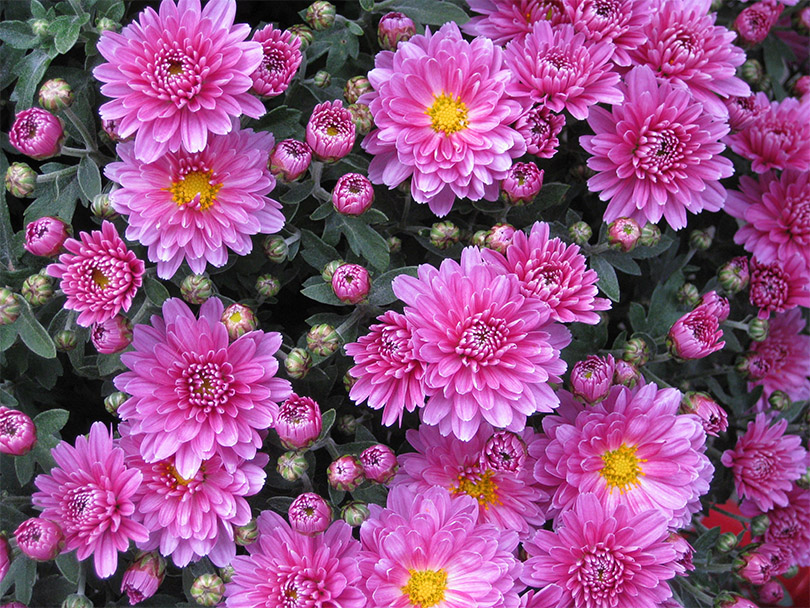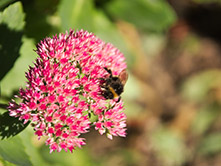By Vicki Spencer, Master Gardener
September’s cooler evenings are refreshing after a hot summer, both for us and our gardens. It’s a good time to walk around your garden to see where you might add some seasonal color. As long as the soil remains warm, the roots of many transplants will take hold and they will grow until the ground freezes. A special bonus of adding plants in the fall — at least in normal years — is that garden centers offer bargains to reduce their inventories. Not only can you find lovely annuals, but spring-blooming bulbs, perennials, trees and shrubs may also go on sale. The question is: What can you plant to add fall color?
Sedum is a favorite border plant and rock garden staple. Different varieties bloom in different seasons. Sedum Autumn Joy (stonecrop) has thick leaves with clusters of red flowers that appear in late summer. It flourishes in sun and partial shade and requires little moisture. Unlike other perennials, it doesn’t require deadheading. The flower heads provide great interest during the winter, but you should remove any accumulated debris to discourage damaging insects staying over the winter. You can pair Sedum Autumn Joy — which typically grows 18 inches — with flowering shrubs, roses and other perennials like coneflowers, crotons and celosia.
It’s best to plant coneflowers in the spring, but if you find transplants, they will bloom in the fall. Crotons also bloom during the fall, and their vein patterns are striking on their fall-colored leaves. Both require well-drained soil and six hours of sunlight to continue blooming until the first frost.
Celosia adds great fall color with its red, orange or yellow flowers. Varieties grow from 6 inches to 3 feet tall, so chose one depending upon placement in your garden. Celosia thrives in full to partial shade but is hearty enough to handle cooler temperatures. Its spike-shaped blooms contrast nicely with sedum and coneflowers.
Chrysanthemums, or mums, also offer wonderful fall color, but should not be paired with sedum because of different water requirements. While both plants enjoy full sun and well-drained soil, chrysanthemums’ shallow roots require more water. Fall-blooming chrysanthemums are particularly eye-catching when other flowers begin to fade away. Plant varieties that grow only a few inches tall along borders and taller versions further back.
Although it’s fun to add fall flowers to your garden, pinks and purples from nonedible, leafy vegetables are also stunning. It’s difficult to describe the dramatic effect of ornamental kale with green leaves wrapped around purple leaves, which, in turn, embrace pinkish-white centers. Ornamental cabbage is similarly striking with its green and purple leaves. Both ornamentals grow best in full sun and well-drained soil, but hold up well in cooler fall temperatures. Keeping with this color scheme, you could add purple, pink and blue asters.
Regardless of your color preferences, there are many options available to create a garden that remains colorful throughout the fall.
Gardener Vicki Spencer has an eclectic background in conservation, water, natural resources and more.


